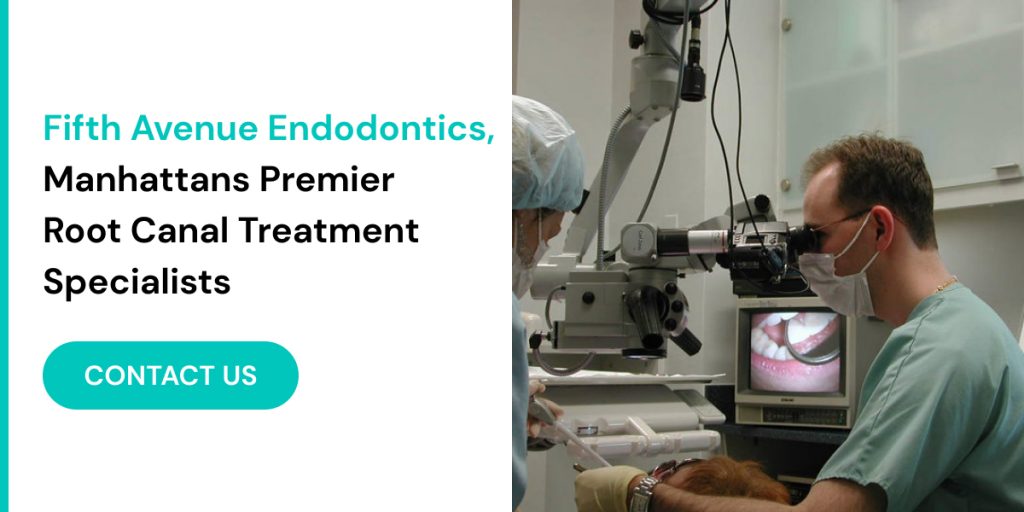Calcified root canals present a substantial challenge for endodontists, particularly in a high-demand environment like Manhattan. As dental professionals in this bustling metropolis often encounter complex cases, having a thorough understanding of how to manage and treat calcified root canals is crucial for successful outcomes. Calcification occurs when the pulp chamber and root canals become narrowed or obstructed due to excessive deposition of hard tissue, which complicates access and treatment.
In Manhattan, where patients frequently seek specialized care for intricate dental issues, the expertise of an Endodontist in Midtown Manhattan becomes invaluable. These professionals are well-versed in advanced techniques and technologies that can effectively address the difficulties associated with calcified root canals. Modern endodontic practices use high-resolution imaging, such as cone beam computed tomography (CBCT), to gain detailed views of the affected tooth. This advanced imaging helps in accurately diagnosing the extent of calcification and devising an appropriate treatment plan.
Furthermore, skilled endodontists in Midtown Manhattan employ specialized instruments and techniques, such as nickel-titanium rotary files and ultrasonic tools, to navigate and treat calcified canals more effectively. Understanding these advanced methods can provide patients with clarity on their treatment options and enhance their overall experience in managing calcified root canals.
Understanding Calcified Root Canals
Calcified root canals are a challenging condition where the natural space within the pulp chamber and root canals of a tooth becomes constricted or obstructed due to the deposition of hard tissue. This phenomenon can occur for several reasons, including aging, trauma, or underlying dental diseases. As we age, the pulp chamber of our teeth naturally undergoes changes, often resulting in a gradual buildup of hard tissue that narrows the canal space. Additionally, trauma to the tooth or chronic conditions such as pulpitis can accelerate this process, leading to calcification.
The calcification process typically involves the accumulation of calcium salts and other minerals within the canal, which progressively reduces its diameter. This narrowing makes it increasingly difficult for endodontists to navigate and effectively treat the canal system, as traditional methods and tools may struggle to reach and clean these constrained areas.
When dealing with calcified root canals, the expertise of a skilled Endodontist in Midtown Manhattan is essential. These professionals are trained to handle the complexities associated with calcified canals and employ advanced techniques and tools to overcome the challenges posed by such cases. For instance, modern endodontists use high-resolution imaging, such as cone beam computed tomography (CBCT), to obtain detailed 3D views of the tooth’s internal structure. This technology allows for accurate diagnosis and treatment planning, facilitating a more effective approach to managing calcified canals.
Furthermore, specialized instruments, such as flexible nickel-titanium rotary files and ultrasonic devices, are crucial for navigating through narrow and calcified root canals. These tools enable endodontists to clean and shape the canal system more efficiently, improving the likelihood of a successful treatment outcome.
Understanding the nature of calcified root canals and the sophisticated methods employed to treat them highlights the importance of seeking expert care. For patients in Manhattan, consulting with a knowledgeable endodontist ensures that they receive the best possible treatment for this challenging condition.

The Importance of Advanced Techniques
At Fifth Avenue Endodontic, Dr. Iofin and his team employ several advanced techniques to address the complexities associated with calcified root canals. Here’s a closer look at some of these methods:
- Enhanced Imaging Technology
Accurate diagnosis is the first step in treating calcified root canals. Modern endodontic practices, including those at Fifth Avenue Endodontic, use high-resolution imaging techniques such as cone beam computed tomography (CBCT). This advanced imaging provides detailed three-dimensional views of the tooth’s structure, helping Dr. Iofin and his team to precisely locate and assess the calcified canals. - Use of Specialized Instruments
The complexity of calcified root canals often necessitates the use of specialized instruments. For instance, nickel-titanium (NiTi) rotary instruments are designed to be more flexible and durable, which is essential for navigating through narrow and curved canals. Dr. Iofin uses these tools to increase the chances of successful cleaning and shaping of the root canal system. - Ultrasonic Techniques
Ultrasonic instrumentation can be particularly effective in treating calcified root canals. By using ultrasonic files and tips, Dr. Iofin can enhance the cleaning of the canal system. These tools produce high-frequency vibrations that help in breaking up and removing calcified deposits from the canal walls. - Manual Techniques
Despite the availability of advanced tools, manual techniques remain an essential part of endodontic treatment. Skilled endodontists like Dr. Iofin use fine hand files to carefully explore and treat calcified canals. This meticulous approach allows for a more controlled and precise treatment process.
Steps in Treating Calcified Root Canals
- Diagnosis and Assessment
The first step in treating a calcified root canal is a thorough assessment. At Fifth Avenue Endodontic, Dr. Iofin conducts a comprehensive evaluation using both visual examination and advanced imaging. This assessment helps determine the extent of calcification and the best approach for treatment. - Access Preparation
Once the diagnosis is confirmed, the next step is to gain access to the root canal system. In cases of calcification, creating an adequate access cavity is critical. This step involves carefully removing the tooth’s outer layers to expose the canal entrance. - Canal Cleaning and Shaping
With access achieved, the focus shifts to cleaning and shaping the canal. Dr. Iofin employs a combination of rotary and ultrasonic instruments to remove calcified tissue and debris. The goal is to create a clean and properly shaped canal that can be filled effectively. - Canal Filling
After cleaning and shaping, the canal is filled with a biocompatible material, usually gutta-percha. This step seals the canal and prevents future infections. Proper filling is crucial to ensure the long-term success of the root canal treatment. - Restoration
The final step involves restoring the tooth to its original function and appearance. This often requires placing a crown or other restorative materials to protect the tooth and ensure its durability.
The Role of Follow-Up Care
After undergoing treatment for a calcified root canal, follow-up care is a critical component of ensuring the long-term success and health of the affected tooth. This phase of care involves monitoring the tooth’s healing process and identifying any potential complications that may arise. Effective follow-up care can significantly influence the outcome of the treatment and the overall well-being of the patient.
Immediately following the root canal treatment, the tooth will begin a healing process that can take several months. During this time, it is crucial to keep a close eye on the tooth to ensure that it is healing properly and that no infection or other issues develop. Regular follow-up appointments allow Dr. Iofin and his team at Fifth Avenue Endodontic to evaluate the progress of the healing, make any necessary adjustments, and address any concerns that may arise.
One of the key aspects of follow-up care is periodic imaging, which may include X-rays or other diagnostic tools to monitor the tooth’s condition. These images help in assessing whether the root canal filling material is properly contained and if the surrounding tissues are healing as expected. Any signs of persistent infection or complications can be promptly addressed during these follow-up visits.
Additionally, Dr. Iofin emphasizes the importance of patient communication during the follow-up period. Patients are encouraged to report any unusual symptoms, such as prolonged discomfort, swelling, or changes in bite, which could indicate issues with the treated tooth. Early detection of such symptoms allows for timely intervention, which can prevent further complications and improve the chances of a successful treatment outcome.
Overall, diligent follow-up care plays a vital role in the success of root canal treatments. By maintaining regular check-ups and staying attuned to any potential issues, patients can ensure that their dental health remains intact and that the benefits of their treatment are fully realized. Dr. Iofin and his team are committed to providing comprehensive follow-up care to support their patients’ long-term dental health and satisfaction.

Conclusion
Treating calcified root canals requires a blend of advanced technology, specialized instruments, and expert technique. An Endodontist Midtown Manhattan, like Dr. Iofin at Fifth Avenue Endodontic, brings a wealth of experience and a commitment to utilizing the latest methods to address these complex cases. If you’re dealing with a calcified root canal, seeking out a skilled endodontist can make all the difference in achieving a successful outcome and maintaining your dental health.
By understanding the various approaches used in treating calcified root canals, patients can make informed decisions about their dental care. Remember, the expertise of an experienced endodontist is key to navigating these challenging cases effectively.
If you have any questions or need to schedule a consultation, don’t hesitate to reach out to Fifth Avenue Endodontic. Dr. Iofin and his team are here to provide the highest level of care and support for your endodontic needs.

